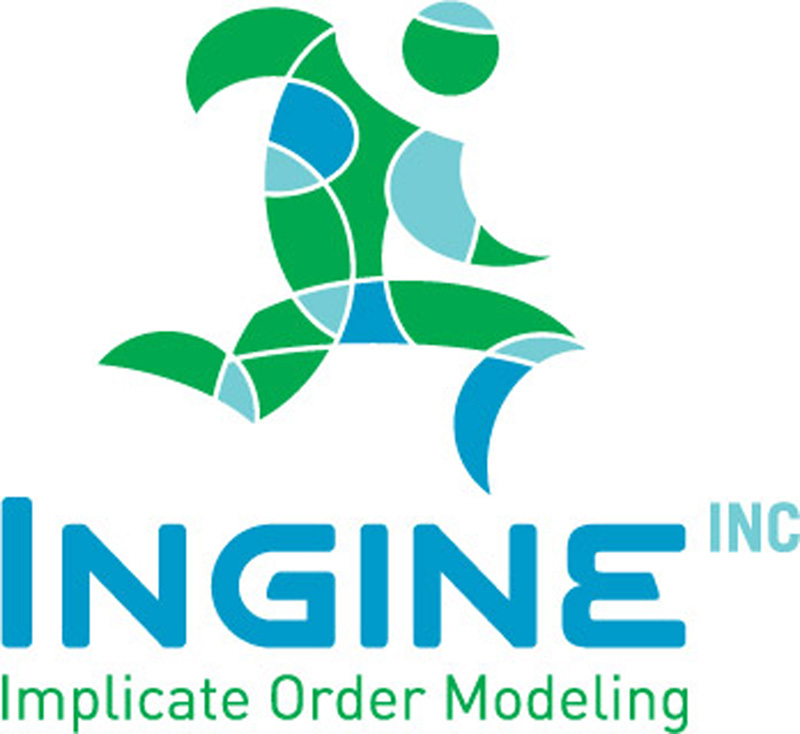A Universal Exchange Language Solution Driving Semantic Interoperability and a BlockChain Approach to Healthcare and Biomedicine.
Barry Robson and Srinidhi Boray; Ingine Inc. (www.ingine.com) Delaware
BioIngine.com’s Revolutionary Technology based on Q-UEL (Quantum Universal Exchange Language) and its derivative Hyperbolic Dirac Net (an advancement to Bayesian learning); designed in heaven for achieving Blockchain in Healthcare Interoperability.
Particularly Following Features
- Designed to drive national and global standards for interoperability
- Designed to support digital certificates
- Patient data encryption (de-identification and identification)
- Patient records disaggregation (transaction chunks) and aggregation
- Patient data existing as meta-statements (smaller chunks of blockchain
- Multi-level encryption to support multi-tier consent management
- Workflow integration across interoperability
- Secured backtrack
Synopsis.
The essential features of the blockchain approach to healthcare and biomedical (including pharmaceutical) research has been researched by the authors and collaborators for many years, using a novel Universal Exchange Language, a protocol for managing data, information, and knowledge that maps to blockchain. Several preferable modes of use have emerged. It is a modular toolkit designed so that other methods of encryption and workflow established in industry, including the emerging blockchain approach, can be incorporated.
The Blockchain Approach.
The modern notion of blockchain as a primarily financial data structure that can be timed-stamped and signed using a private key to prevent tampering is, at least as a broad concept, very young. It only goes back to around 2014 as the R3 company founded by David Rutter, and the associated financial industries blockchain research consortium began in 2015 [1]. The term “blockchain” as a digital public distributed ledger associated with the “virtual currency” bitcoin does go back to the idea of bitcoin in 2008 and release of the first open source code in 2009 [2]. In the common international interpretation (e.g. ref [3]), a distributed ledger as an asset database can be shared through (potentially global) network of stakeholders each of whom can have their own identical copy. Changes can be quickly reproduced in all copies by the specific authority and responsibility rules of the network. Security, record accuracy, and the privacy of the human stakeholders can be maintained cryptographically using digital keys and digital certificates as, or containing, signatures.
The ledger is not in general the assets; they are recorded in the ledger but can be financial, legal, electronic, or physical. For medicine, the electronic patient record comes immediately to mind, but the healthcare system and medical research has many assets. “In the Fintech and Insurtech industry, 2015 was the “year of blockchain” [1], but as discussed below, extensive research and testing on what was essentially a blockchain approach, specifically for health IT and healthcare-related and biomedical research, had already begun in 2009, and even considerably earlier in respect to its underpinning research. The scope and mission of this effort is much larger than blockchain itself, and below we describe in broad terms the features of the system that was a response to many calls as described in numerous peer-reviewed publications (see References). The calls that guided development include the PCAST 2010 report discussed below, OSEHRA and Standards & Interoperability EU-US eHealth initiatives by participation of the authors, the Nationwide Interoperability Roadmap, PCOR, PMI, delivery system reform, and other national healthcare delivery priorities, but not excluding non-US healthcare developments for continuity of care and access to global translational research. Although the ideas, novel principles and test results are more important than specific code, note that we are in a position of being able to describe prototype implementations and results, including best system configurations, and we focus on an overview of these rather than on an abstract account of the relationships to the calls. The implementation tests reveal the kind of solution vital to interoperability, security privacy, and easy analysis and monitoring. Miscibility with the above initiatives and preexisting standards was made possible by a new semantic approach drawn from a standard in physics, positioning it as a universal second language for healthcare by its flexible ontology and by carrying cross definitions of diverse nomenclatures used in medicine. The ability to fill gaps safely has been demonstrated with probabilistic risk analysis of time of access in authorized use versus resistance to malign attack. It has begun to be implemented in public smaller health cross-sectional and epidemiological toxicology studies in the real world, but it has shown to be scalable to nation-sized populations. The main stream of this effort began as follows.
Continued…
Q-UEL – Introduction
Q-UEL is an XML-like universal exchange language based on mutually consistent principles from physics, mathematics, and semantics, but most importantly it is based on the notation and associated algebra developed by Professor Dirac, called the Dirac notation, bracket notation, or braket notation. It was first developed to handle uncertain observations and probabilistic inference from them in quantum mechanics. Not only has it stood as a standard for expressing data, calculations, and ideas in physics since the 1940s, but also it is associated with making some of the most accurate predictions about the world ever made. In that sense, it stands in competition only to Einstein’s Theory of Relativity. Q-UEL stands for “Quantum Universal Exchange Language”. Its development initiated by Dr Barry Robson is a pursuit of the QEXL consortium, which is more generally interested in the future of the web as an intelligent thinking entity, capable of reasoning to help humans make decisions. It focuses on applications of thinking from quantum mechanics for cloud and transmission security using a particular notion of disaggregation or reversible shredding of documents (arbitrarily or by metadata) into Dirac-like “tags”. This adds a separate dimension of so-called “entropy protection” on top of encryption by mixing millions of shreds with those of other users (including patients). The second (Ingine Inc.) focuses on using Q-UEL in development of local and global architecture, “Big Data” mining, statistics and meta-analysis, and decision support and systematic review systems employing a specific notion of “Dirac inference”.
All About Q-UEL

